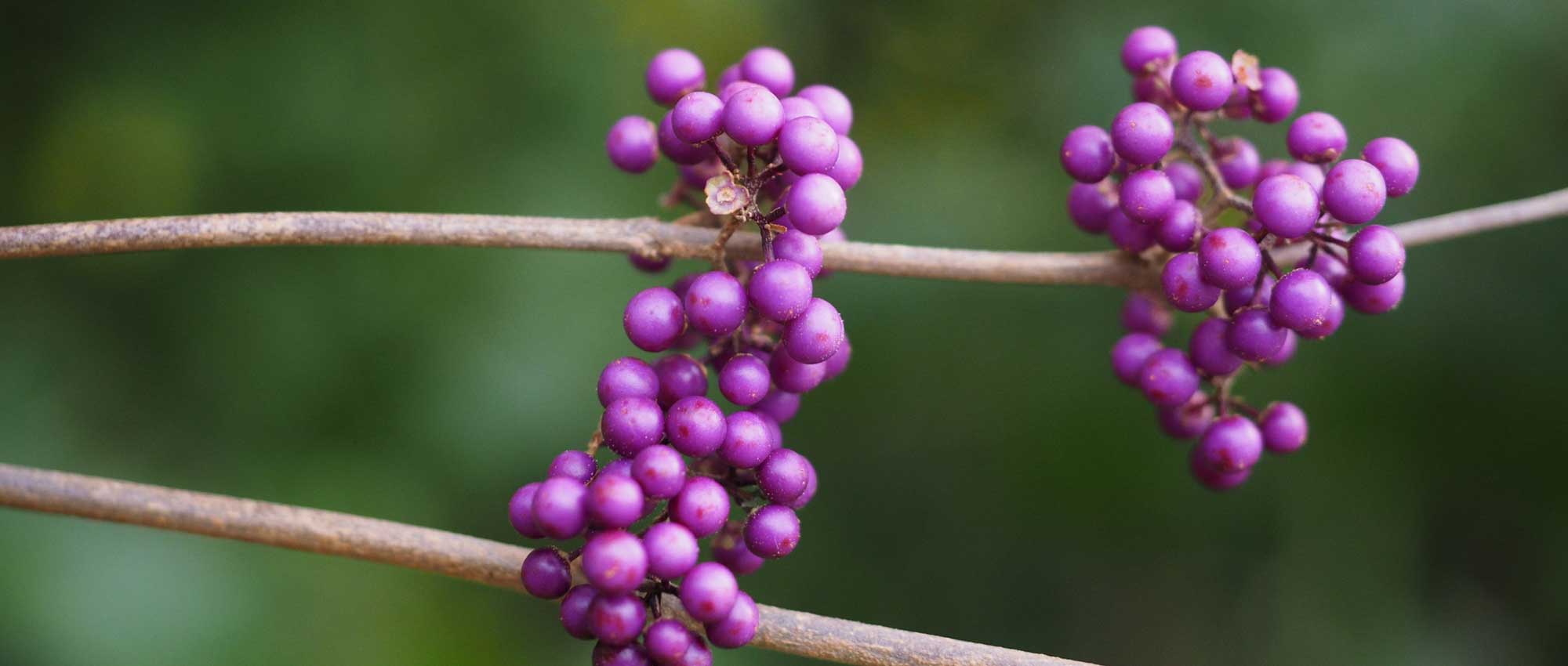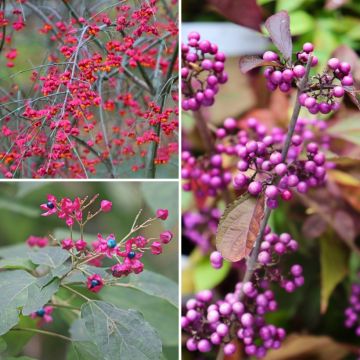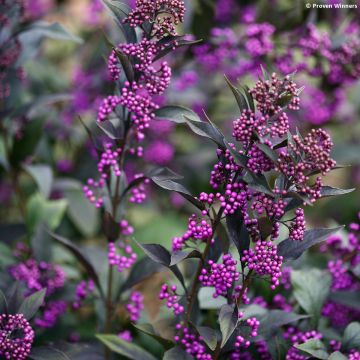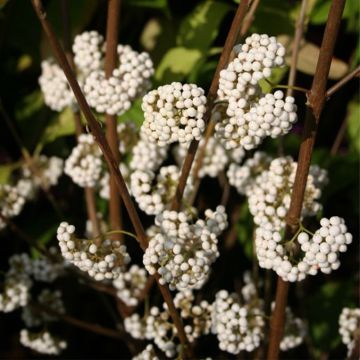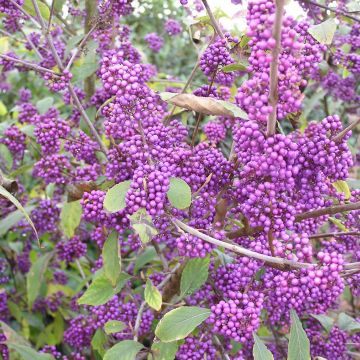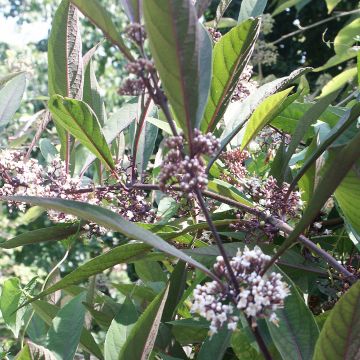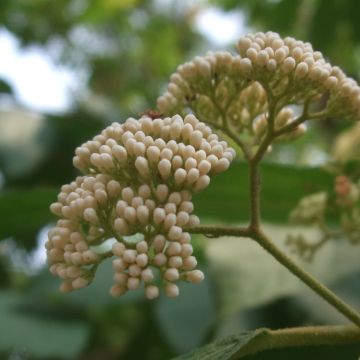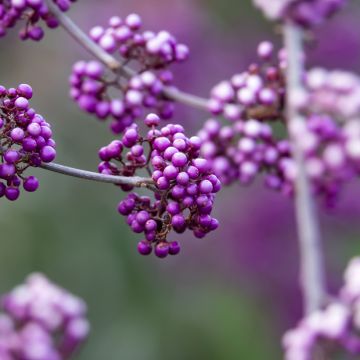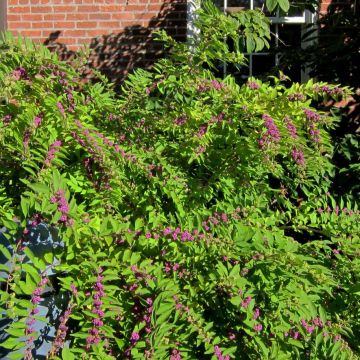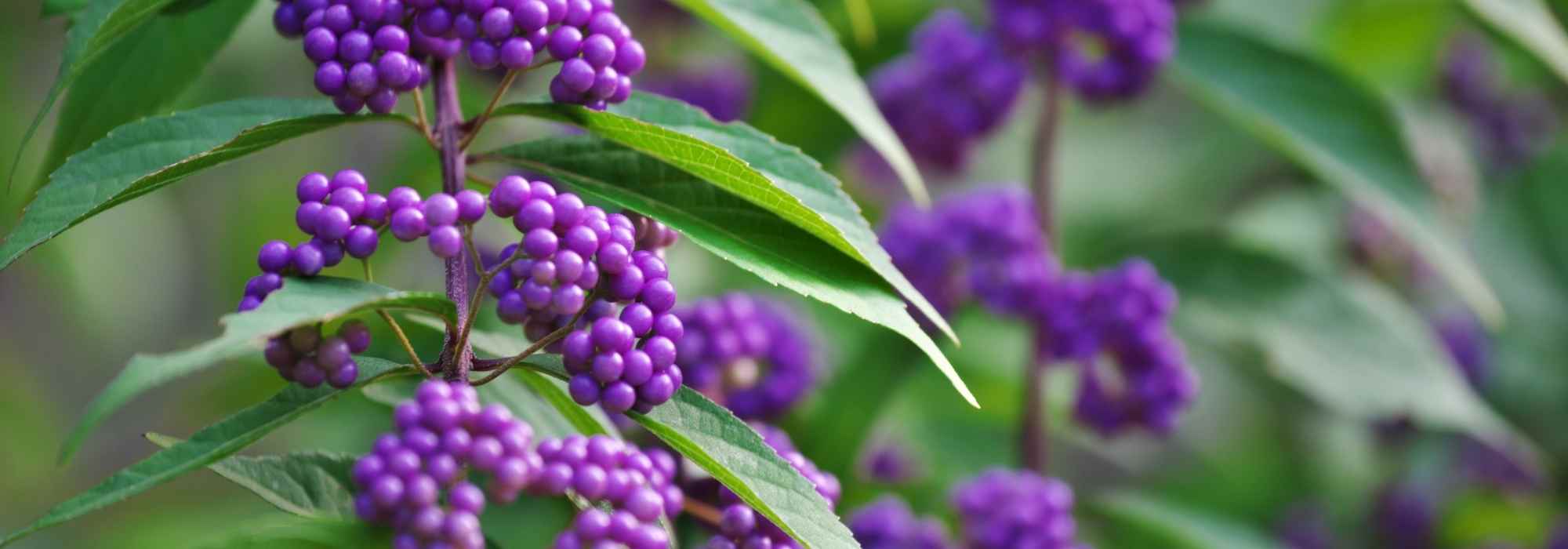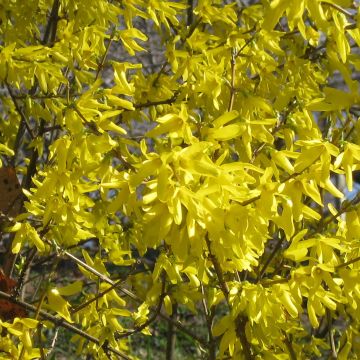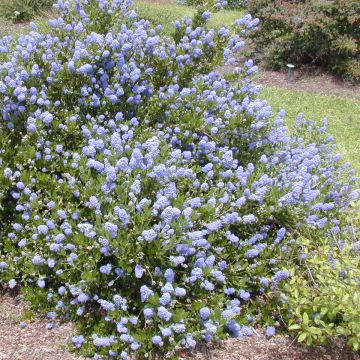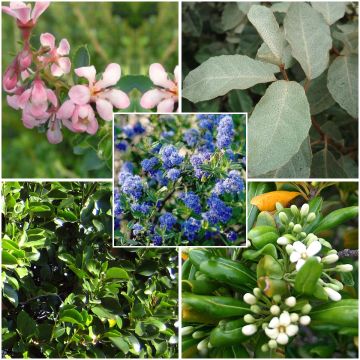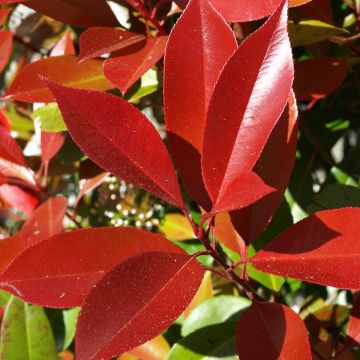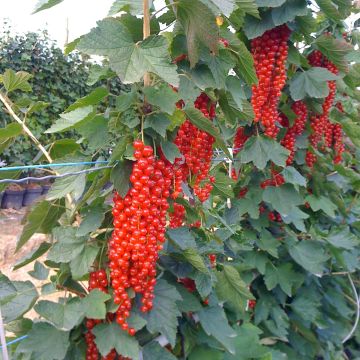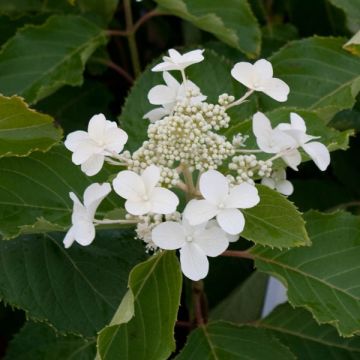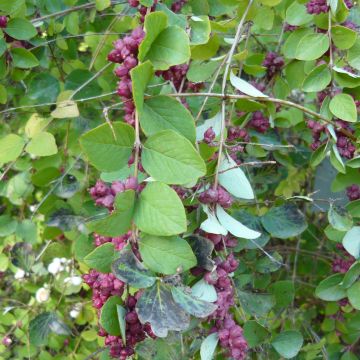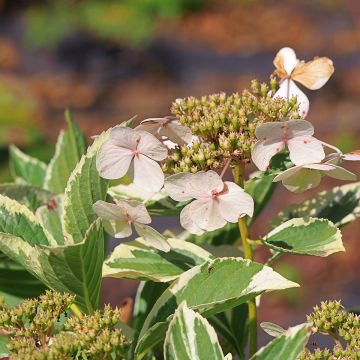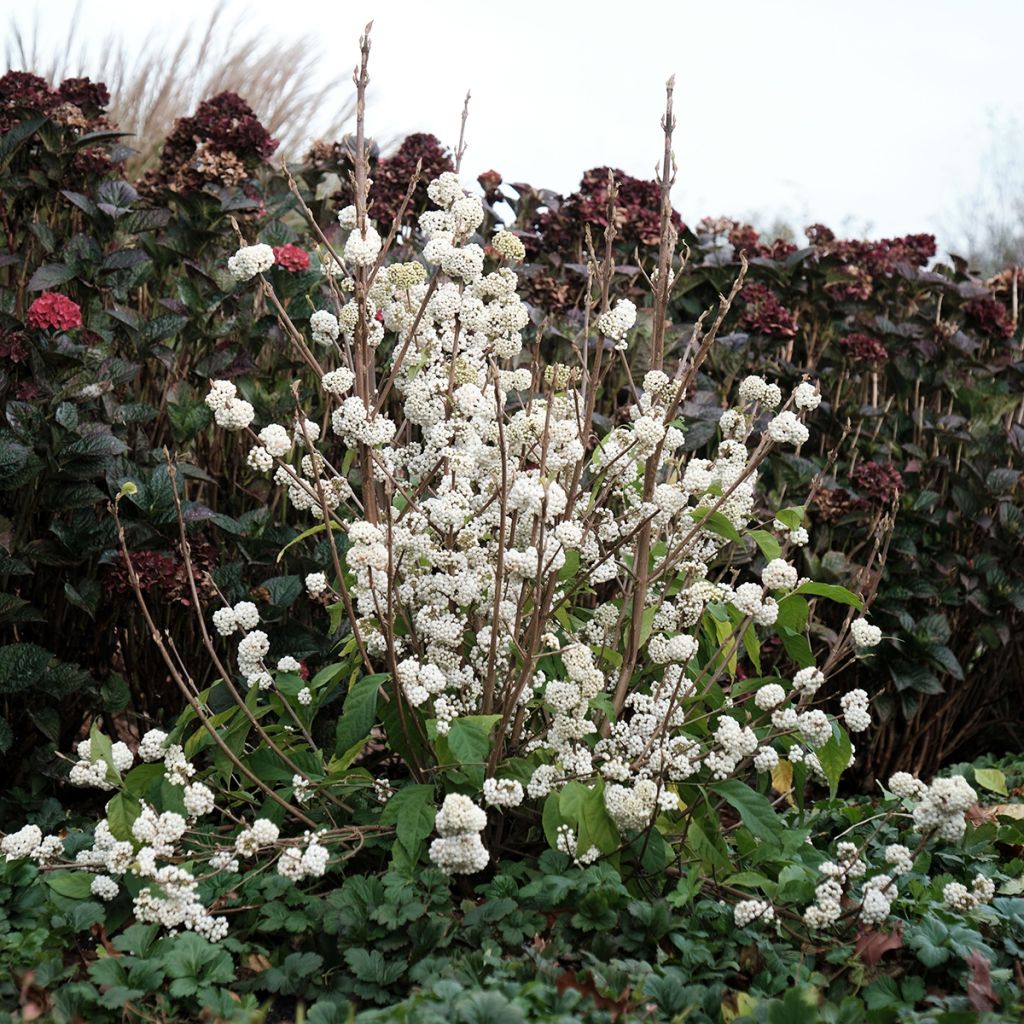

Callicarpa bodinieri Magical Snowqueen
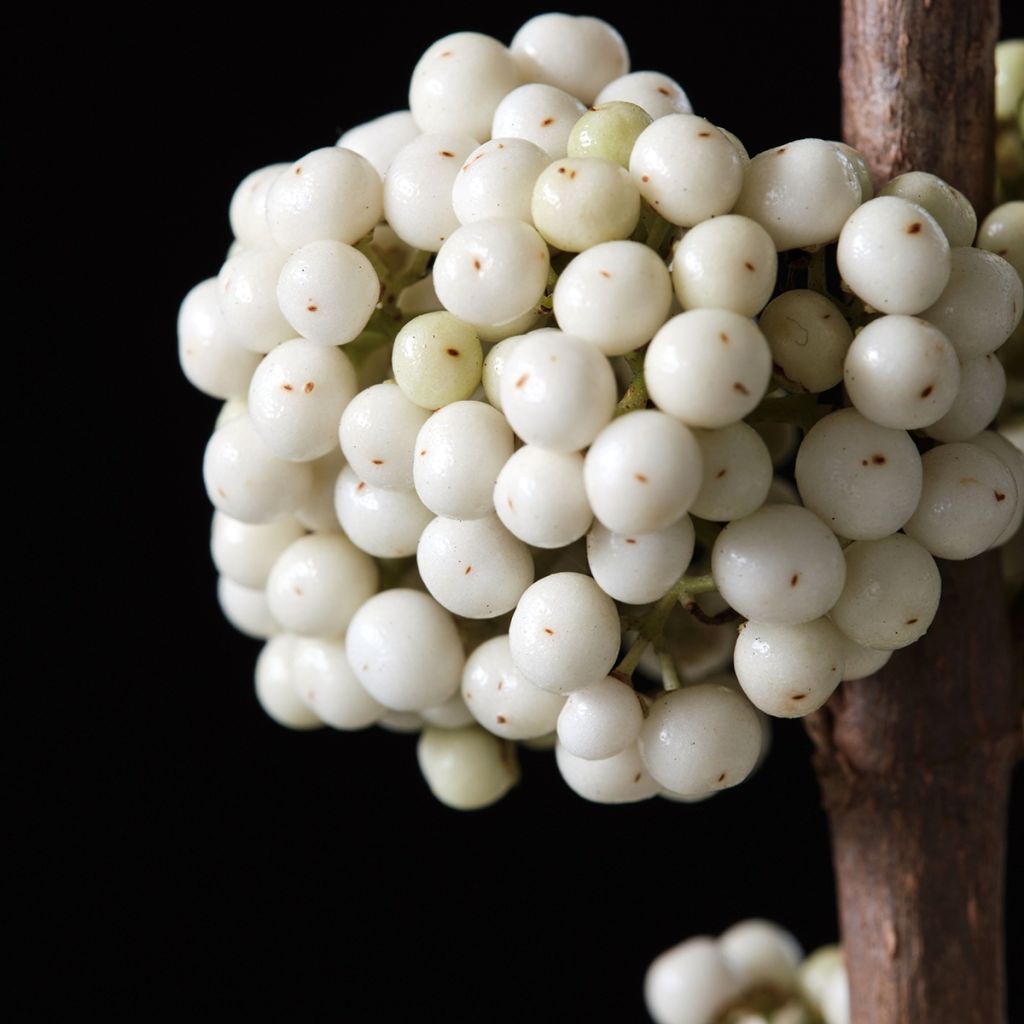

Callicarpa bodinieri Magical Snowqueen
View more pictures
Hide images

Solenn P.

Callicarpa Snowqueen on the 1st of September and its promise of pearly beads in winter (Brittany)
Solenn P. • 35 FR
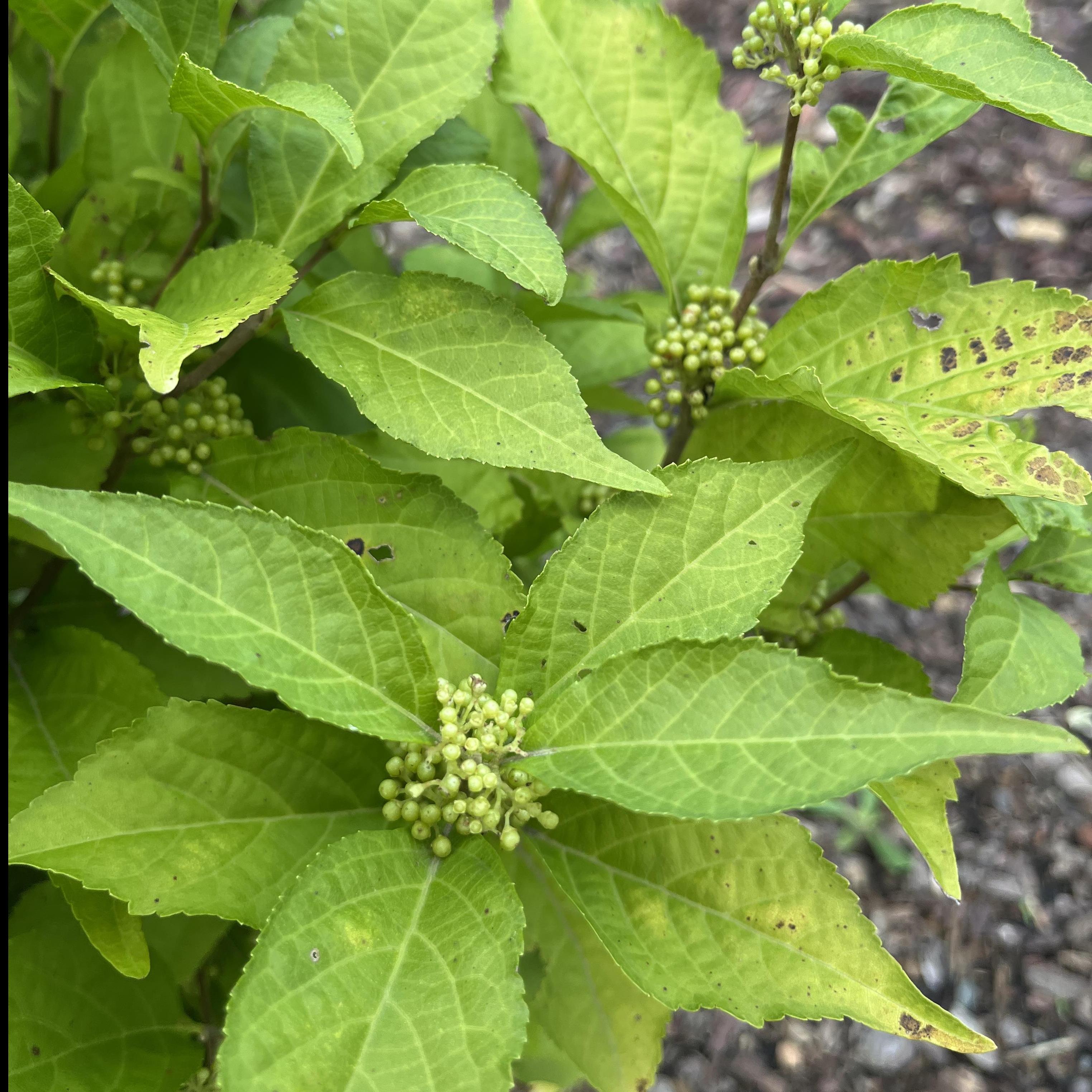
Solenn P.

Callicarpa Snowqueen on the 1st of September and its promise of pearly beads in winter 2 (Brittany)
Solenn P. • 35 FR
Callicarpa bodinieri Magical Snowqueen
Callicarpa x bodinieri Magical Snowqueen®
Bodinier's Beautyberry, Beautyberry
Special offer!
Receive a €20 voucher for any order over €90 (excluding delivery costs, credit notes, and plastic-free options)!
1- Add your favorite plants to your cart.
2- Once you have reached €90, confirm your order (you can even choose the delivery date!).
3- As soon as your order is shipped, you will receive an email containing your voucher code, valid for 3 months (90 days).
Your voucher is unique and can only be used once, for any order with a minimum value of €20, excluding delivery costs.
Can be combined with other current offers, non-divisible and non-refundable.
Home or relay delivery (depending on size and destination)
Schedule delivery date,
and select date in basket
This plant carries a 24 months recovery warranty
More information
We guarantee the quality of our plants for a full growing cycle, and will replace at our expense any plant that fails to recover under normal climatic and planting conditions.
Would this plant suit my garden?
Set up your Plantfit profile →
Description
The Callicarpa bodinieri 'Magical Snowqueen' is a bush that will bring a lot of charm to the late season, when flowers have become rare. Its shining white fruiting attracts all attention, arranged in small clusters along its branches. It accompanies a golden yellow autumn foliage and dresses its bare branches in early winter. It is a very hardy plant and very accommodating, which looks stunning as a large mass of bushes or in a free hedge, in a sunny or semi-shaded exposure.
The Callicarpa bodinieri Magical Snowqueen is a recent horticultural variety derived from Bodinier's beautyberry. This deciduous bush was traditionally classified as part of the Verbenaceae family, but is now considered a Lamiaceae, alongside Salvia and Mint. This plant is native to central China and Vietnam. The 'Magical Snowqueen' beautyberry has an upright and bushy habit, reaching about 1.75m (5 ft 8 in) in height and 1.50m (4 ft 11 in) in width at maturity. The plant produces abundantly, in June-July, on the current year's branches, discreet small flowers of white-pink colour with yellow stamens. This flowering, visited by pollinating insects, is followed in early October by the formation of numerous 3.5 to 4 mm (0.1 to 0.2 in) diameter berries, shiny and pure white, grouped in small clusters along the stems. They remain more or less until winter. The foliage is composed of entire, oval-elliptical leaves, dark green on the upper side, paler and velvety on the underside. They take beautiful autumnal shades, from yellow to golden. Bodinier's beautyberries adapt to any well-drained soil, as long as it is not too dry in summer, even limestone.
Plant the Callicarpa Bodinieri Magical Snowqueen in a prominent place to enjoy its white berries, which shine in autumn and are so cheerful during the gloomy days of early winter. Planting Callicarpa in groups of three is recommended for better pollination and fruit formation. This bush is very hardy and requires minimal maintenance. It can be planted alongside a carpet of Stachys Byzantina or Silver Basket to enhance its beauty. Additionally, you can cut its branches covered with fruits to create beautiful bouquets decorated with mistletoe and holly.
Callicarpa bodinieri Magical Snowqueen in pictures
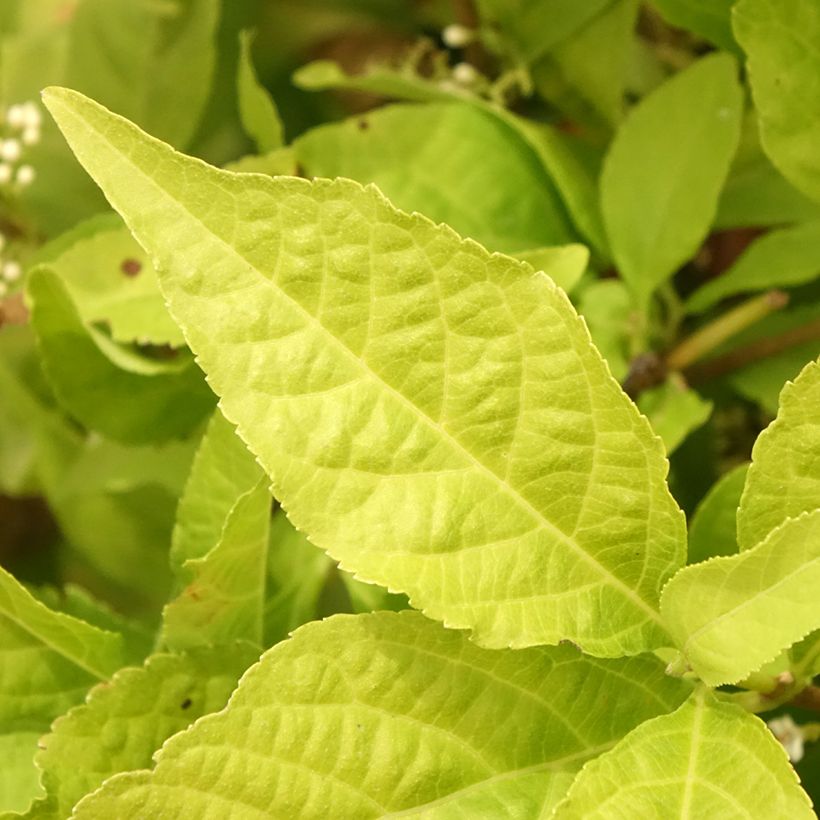

Plant habit
Flowering
Foliage
Botanical data
Callicarpa
x bodinieri
Magical Snowqueen®
Verbenaceae
Bodinier's Beautyberry, Beautyberry
Cultivar or hybrid
Other Callicarpa
View all →Planting and care
The Callicarpa bodinieri Magical Snowqueen is a low-maintenance shrub that can grow in regular soil with good drainage. It can even grow in slightly chalky soil, but it needs to be deep and moist. This shrub should be planted in a place with a lot of sunshine or partial shade. Once it's mature, it's hardy, but during its first few years, it's best to protect it with mulch. If any of the branches are damaged by frost, it's recommended to prune them, as they will grow back from the base. To help with pollination and fruiting, it's best to plant this variety in groups of three. To keep it healthy, it's wise to prune at the end of winter, cutting back the branches to two-thirds of their length.
Planting period
Intended location
Care
Planting & care advice
This item has not been reviewed yet - be the first to leave a review about it.
Similar products
Haven't found what you were looking for?
Hardiness is the lowest winter temperature a plant can endure without suffering serious damage or even dying. However, hardiness is affected by location (a sheltered area, such as a patio), protection (winter cover) and soil type (hardiness is improved by well-drained soil).

Photo Sharing Terms & Conditions
In order to encourage gardeners to interact and share their experiences, Promesse de fleurs offers various media enabling content to be uploaded onto its Site - in particular via the ‘Photo sharing’ module.
The User agrees to refrain from:
- Posting any content that is illegal, prejudicial, insulting, racist, inciteful to hatred, revisionist, contrary to public decency, that infringes on privacy or on the privacy rights of third parties, in particular the publicity rights of persons and goods, intellectual property rights, or the right to privacy.
- Submitting content on behalf of a third party;
- Impersonate the identity of a third party and/or publish any personal information about a third party;
In general, the User undertakes to refrain from any unethical behaviour.
All Content (in particular text, comments, files, images, photos, videos, creative works, etc.), which may be subject to property or intellectual property rights, image or other private rights, shall remain the property of the User, subject to the limited rights granted by the terms of the licence granted by Promesse de fleurs as stated below. Users are at liberty to publish or not to publish such Content on the Site, notably via the ‘Photo Sharing’ facility, and accept that this Content shall be made public and freely accessible, notably on the Internet.
Users further acknowledge, undertake to have ,and guarantee that they hold all necessary rights and permissions to publish such material on the Site, in particular with regard to the legislation in force pertaining to any privacy, property, intellectual property, image, or contractual rights, or rights of any other nature. By publishing such Content on the Site, Users acknowledge accepting full liability as publishers of the Content within the meaning of the law, and grant Promesse de fleurs, free of charge, an inclusive, worldwide licence for the said Content for the entire duration of its publication, including all reproduction, representation, up/downloading, displaying, performing, transmission, and storage rights.
Users also grant permission for their name to be linked to the Content and accept that this link may not always be made available.
By engaging in posting material, Users consent to their Content becoming automatically accessible on the Internet, in particular on other sites and/or blogs and/or web pages of the Promesse de fleurs site, including in particular social pages and the Promesse de fleurs catalogue.
Users may secure the removal of entrusted content free of charge by issuing a simple request via our contact form.
The flowering period indicated on our website applies to countries and regions located in USDA zone 8 (France, the United Kingdom, Ireland, the Netherlands, etc.)
It will vary according to where you live:
- In zones 9 to 10 (Italy, Spain, Greece, etc.), flowering will occur about 2 to 4 weeks earlier.
- In zones 6 to 7 (Germany, Poland, Slovenia, and lower mountainous regions), flowering will be delayed by 2 to 3 weeks.
- In zone 5 (Central Europe, Scandinavia), blooming will be delayed by 3 to 5 weeks.
In temperate climates, pruning of spring-flowering shrubs (forsythia, spireas, etc.) should be done just after flowering.
Pruning of summer-flowering shrubs (Indian Lilac, Perovskia, etc.) can be done in winter or spring.
In cold regions as well as with frost-sensitive plants, avoid pruning too early when severe frosts may still occur.
The planting period indicated on our website applies to countries and regions located in USDA zone 8 (France, United Kingdom, Ireland, Netherlands).
It will vary according to where you live:
- In Mediterranean zones (Marseille, Madrid, Milan, etc.), autumn and winter are the best planting periods.
- In continental zones (Strasbourg, Munich, Vienna, etc.), delay planting by 2 to 3 weeks in spring and bring it forward by 2 to 4 weeks in autumn.
- In mountainous regions (the Alps, Pyrenees, Carpathians, etc.), it is best to plant in late spring (May-June) or late summer (August-September).
The harvesting period indicated on our website applies to countries and regions in USDA zone 8 (France, England, Ireland, the Netherlands).
In colder areas (Scandinavia, Poland, Austria...) fruit and vegetable harvests are likely to be delayed by 3-4 weeks.
In warmer areas (Italy, Spain, Greece, etc.), harvesting will probably take place earlier, depending on weather conditions.
The sowing periods indicated on our website apply to countries and regions within USDA Zone 8 (France, UK, Ireland, Netherlands).
In colder areas (Scandinavia, Poland, Austria...), delay any outdoor sowing by 3-4 weeks, or sow under glass.
In warmer climes (Italy, Spain, Greece, etc.), bring outdoor sowing forward by a few weeks.






























